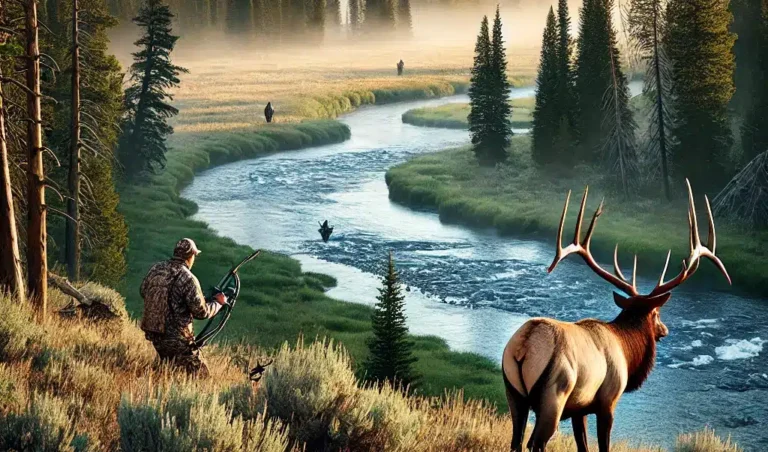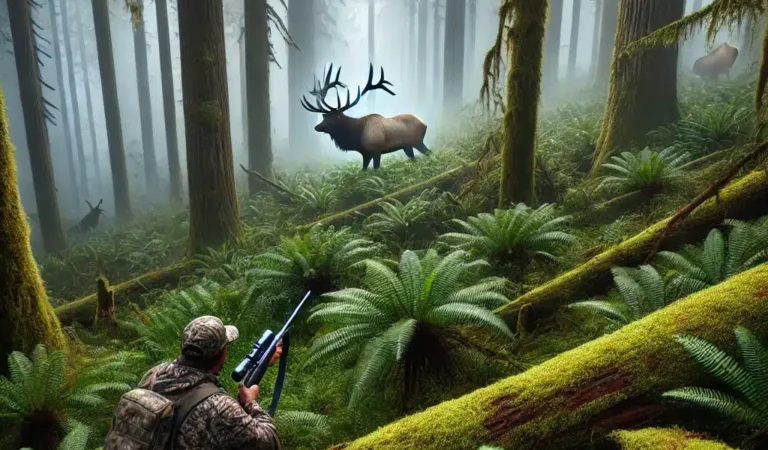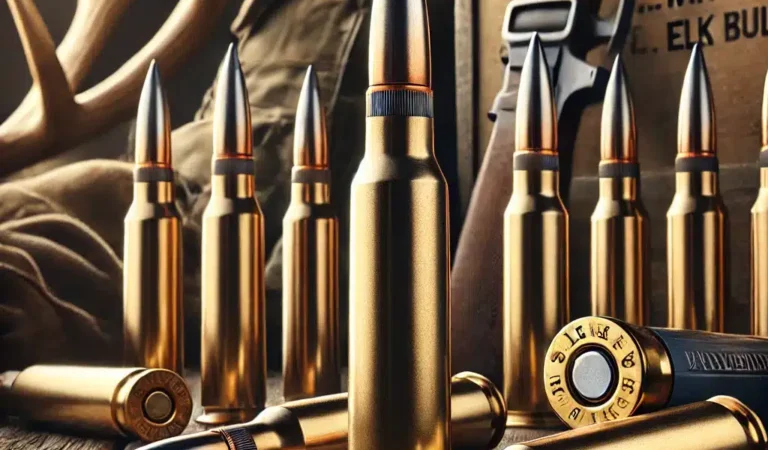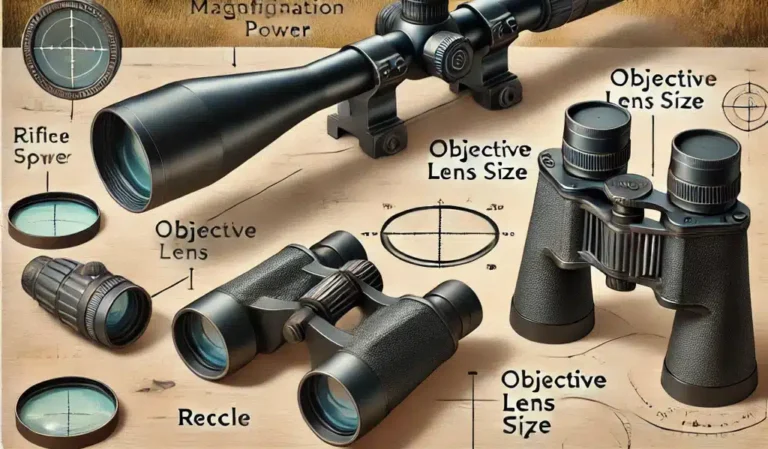Elk Hunting with Muzzleloader: Powerful Advice for 2024
The bull elk stood broadside at 80 yards, steam rising from his nostrils in the crisp October air. My hands steady on my .50 caliber muzzleloader, I took a deep breath and squeezed the trigger. That moment changed my entire approach to elk hunting forever. Let’s talk more about elk hunting with muzzleloader.
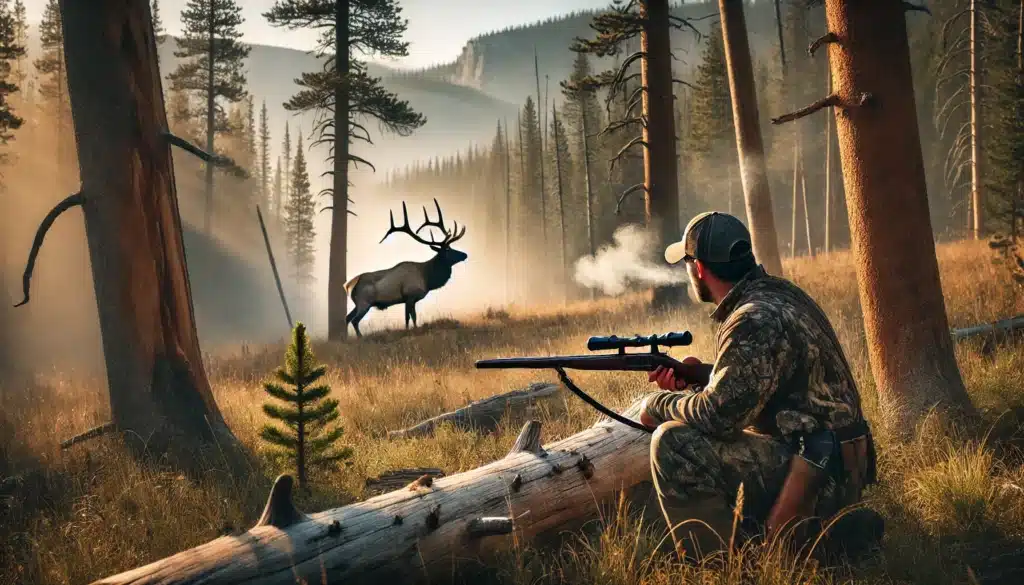
If you consider taking up elk hunting with a muzzleloader, you’ll discover one of hunting’s most rewarding challenges. While modern rifles might offer more forgiveness, nothing matches the pure satisfaction of harvesting an elk with a smoke pole.
I’ve spent 15 years pursuing elk with modern firearms and muzzleloaders, and I’m here to share everything I wish I’d known when I started.
This comprehensive guide will teach you exactly what gear you need, how to master your muzzleloader, and the field-tested techniques that consistently put meat in the freezer.
Whether switching from modern firearms or picking up hunting for the first time, we’ll cover everything from choosing your first muzzleloader to field dressing your elk.
Let’s start with the basics you need to know before heading into elk country.
Getting Started with Muzzleloader Hunting
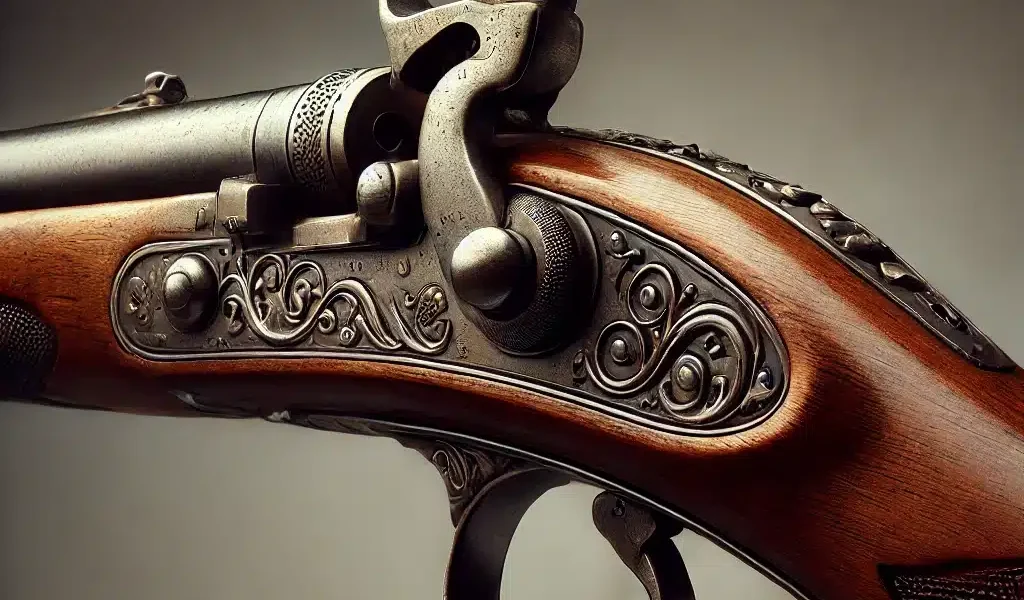
If you’re new to muzzleloader hunting, consider it stepping into history with modern advantages. Today’s muzzleloaders are like our great-grandparents’ rifles but with important upgrades that make them more reliable and accurate.
A muzzleloader sounds exactly like a rifle you load from the muzzle (the front end). Unlike modern rifles, you pop in a cartridge, pour in powder, add a bullet, and use a ramrod to seat everything properly. Sounds complicated? Don’t worry – we’ll break it down step by step.
Types of Muzzleloaders for Elk
- Traditional Flintlocks: The old-school choice requiring true dedication
- Modern In-Lines: Most popular for elk hunting, more reliable in wet weather
- Break-Action Models: Easiest to load and clean
Legal Requirements to Know
- Most states require a 50-caliber or larger for elk
- Specific powder charge limits vary by state
- Some areas restrict scope magnification
- Special hunting seasons often mean less competition
Quick Tip: Before buying any muzzleloader, check your state’s regulations. Rules can be surprisingly different from regular rifle seasons.”
Essential Gear for Success
“Let’s talk about what you need in your pack. After helping dozens of friends get into muzzleloader hunting, I’ve learned to separate the essential gear from the nice-to-haves.
Must-Have Gear List
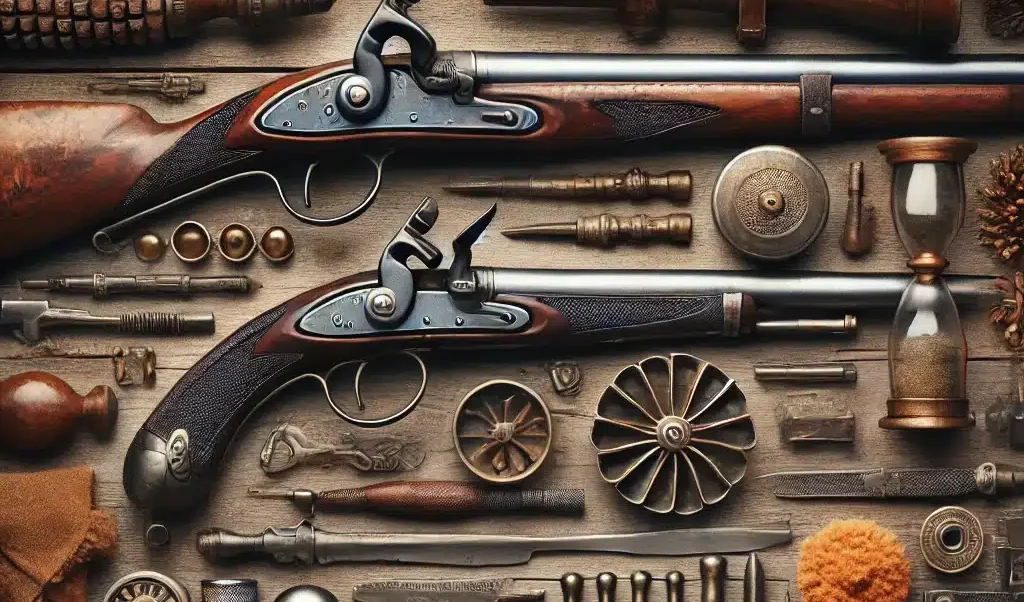
Your Muzzleloader
- Look for a .50 caliber inline model to start
- Quality scope with clear glass
- Reliable ignition system
Loading Supplies
- Powder measures
- Saboted bullets (250-300 grain recommended)
- Primers
- Loading jags and brushes
- Range rod
- Speed loaders (trust me, these are lifesavers)
Safety Equipment
- Eye protection
- Hearing protection
- Powder flask
- Waterproof primer container
Field Testing Note: I store my primers in a waterproof match case attached to my rifle sling. Years ago, I lost a shot opportunity due to wet primers, but I never made that mistake again.
Money-Saving Tip: Don’t cheap out on your powder measure or bullets. One missed shot at a bull elk costs more lost opportunity than buying quality gear up front.
Preparing for Your Hunt
Success with a muzzleloader happens long before you spot your first elk. Let me walk you through the preparation that makes or breaks a hunt.
Practice Makes Perfect
- Start shooting 3 months before the season
- Practice from hunting positions, not just bench rest
- Know your effective range (most shots under 150 yards)
- Load and reload until it becomes muscle memory
Here’s my simple practice routine:
- Three shots at 50 yards
- Three at 100 yards
- Two from kneeling at 75 yards
- One shot after running 50 yards (simulates buck fever!)
Scouting Your Area
- Look for dark timber near meadows
- Find water sources and wallows
- Learn to spot elk droppings and tracks
- Map at least three promising locations
- Note wind patterns at different times of day
The Right Shape for Elk Country
Don’t skip this part – elk country is tough. Here’s a basic fitness plan:
- Hike twice weekly with your pack
- Include uphill training
- Practice shooting after climbing
- Break in your boots early
Tips for a Successful Hunt

After 15 years of chasing elk with a muzzleloader, I’ve learned most success comes down to these key factors:
Best Times to Hunt
- First light until 10 AM
- Late afternoon (3 PM until dark)
- During light rain (elk move more)
- Full moon nights (hunt midday)
Finding Fresh Sign Look for these telltale signs:
- Fresh droppings (should be soft and moist)
- Tracks with clear edges
- Freshly broken branches
- Recently used beds
- Fresh rubs on trees
Calling Strategy – Keep it simple
- Start with soft cow calls
- Wait 15-20 minutes between calls
- Use bugles only if you hear bulls
- Move closer if an elk answers
The Perfect Shot Remember these points:
- Wait for broadside or quartering-away shots
- Aim behind the shoulder
- Don’t shoot through brush
- Stay within your practiced range
- Take your time – you only get one shot
Quick Tip: If you’re wondering whether a shot is too far, it probably is. One of my biggest elk came at just 60 yards because I passed on longer shots while moving closer.
Safety First

Let’s be honest – muzzleloader hunting adds extra risks to an already challenging hunt. But following these simple rules keeps everyone safe.
Loading Safety
- Always measure powder carefully
- Never load directly from a powder container
- Use marked lines on your ramrod to confirm proper seating
- Keep your primer separate until ready to shoot
Weather Watch
The old saying ‘keep your powder dry’ exists for a reason:
- Cover your muzzle in rain
- Check primer before each hunt
- Bring backup primers in waterproof case
- Know when to call it quits in severe weather
Essential Safety Gear
Pack these items every time:
- Basic first aid kit
- GPS or compass (with spare batteries)
- Emergency fire starter
- Space blanket
- Headlamp with extra batteries
- Cell phone in a waterproof bag
After the Shot

The work begins after you pull the trigger. Here’s exactly what to do next.
First Steps
- Mark your shooting position
- Watch where the elk runs
- Wait 30 minutes (unless you see it drop)
- Reload before tracking
Tracking Tips
- Look for blood at deer-belly height
- Mark blood spots with bright tape
- Take photos of the blood trail
- Follow tracks if blood is sparse
Field Dressing
Time is critical now. Here’s the quick version:
- Get the hide off fast
- Remove organs quickly
- Keep meat clean
- Cool the meat immediately
Meat Care
Temperature is everything:
- Quarter the elk
- Get meat off the ground
- Use game bags
- Keep in shade
- Pack out immediately if warm
Real-World Example: Last season, I shot a bull at 3 p.m. when it was 75 degrees. We worked nonstop until midnight, cooling and packing the meat. Every minute counts when it’s warm.”
Common Mistakes to Avoid
Learn from my mistakes so you don’t have to make them yourself.
Rookie Errors
- Forgetting spare primers
- Not practicing with hunting clothes on
- Taking too long to shoot
- Poor powder storage
- Ignoring wind direction
Equipment Fails
- Cheap scope mounts
- Wrong bullet weight
- Dirty breech plug
- Worn out o-rings
Pro Tip: “The biggest mistake I see new muzzleloader hunters make? Not practicing enough. Spend more time at the range than shopping for gear.”
Conclusion

Hunting elk with a muzzleloader isn’t just about harvesting game – it’s about connecting with a hunting tradition that stretches back generations. Every time you load that powder and bullet, you participate in a challenge that will make you a better hunter.
Remember
- Start with quality gear
- Practice religiously
- Know your limits
- Stay safe
- Care for your meat
These techniques work whether you’re after your first elk or your fifteenth. They’ve been tested in the field by myself and countless other hunters who chase elk with smoke poles.

